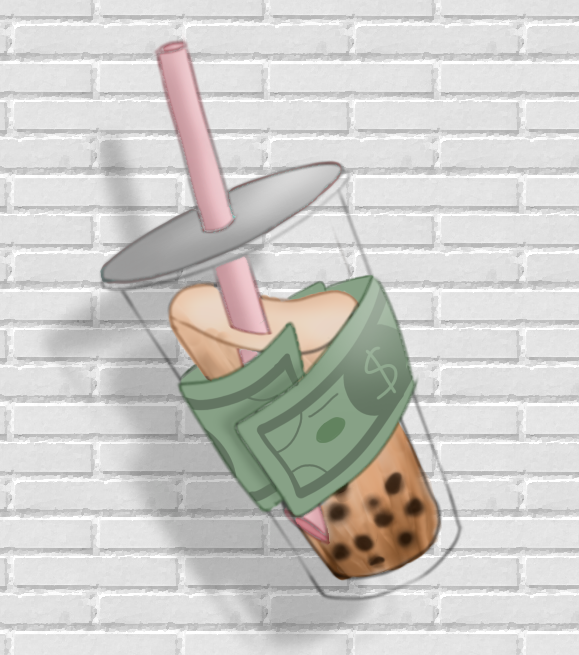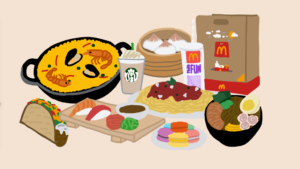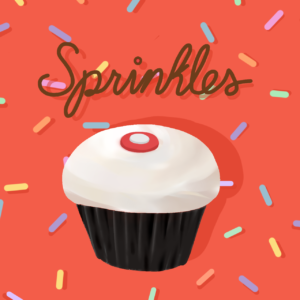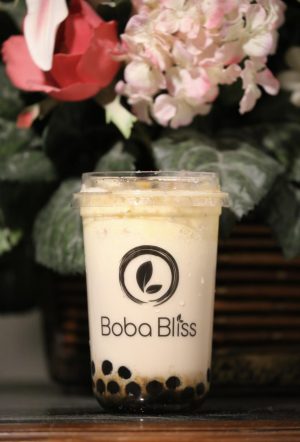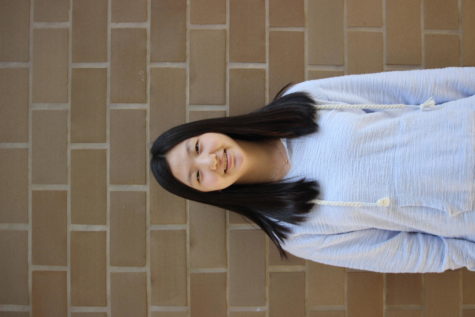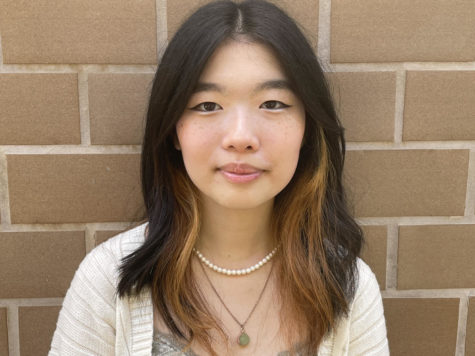Food trends unreasonably hike up boba prices
Many people feel that boba drinks are overpriced just for the hype.
April 27, 2022
For the past few years, milk tea with tapioca pearls, more commonly referred to as bubble tea or boba, has been a trend and has been greatly consumed for both the tea/smoothie and the chewy tapioca pearls. However, as popular as the drink is, it also caused many people to question its pricing. Because many of the consumers are middle and high school students, many expressed that the high general pricing ranges caused the drink to feel overpriced no matter how good it is.
Not only is boba overpriced, but when looking at the prices of many “Instagram-worthy” or popular food or places, it becomes quite evident that everything is expensive. It seems that whenever something becomes more popular, the price of it increases from what it used to be, yet it is still unclear if the price increase is because of the quality of the food, or if it’s simply because it’s popular. On top of that, are the stores raising prices simply because they know that people will still buy expensive foods if it’s considered popular?
The prices of boba certainly increased as the popularity of the drink increased over time. Around two decades ago, when boba wasn’t really popular, it is said that the prices were much cheaper than it is now, only a dollar for a drink with quality tea and fresh milk. However, despite the prices getting multiplied from the original price, the quality of the overpriced boba now is said to still be slightly lower than that of the one-dollar boba.
Alexis Kwon, a sophomore at Dougherty Valley High School, enjoys drinking bubble tea and often buys it. However, she expressed that while she enjoys the drink and will buy it when she wants to drink one, the price of boba drinks has caused her to consider why the prices are so high compared to when it started to become popular, and whether or not they are worth the money.
“The stores probably think it’s an opportunity to gather money and the consumers don’t care because they like the food. So as long as they’re able to get it, they don’t care what the price is, they are happy with it,” Kwon said. “Until like at some point, the trend would start going down and people will start to realize, oh, yeah, these prices are way too expensive to make sense.”
The fact that the price dramatically increased in the span of a couple of years highlights how being “trendy” serves as a justifiable reason for overpricing foods that are considered popular for many stores that mainly sell these types of foods. This further shows how people will care less about the price if they think that the hiked-up price is normal and acceptable.
Eric Kang, a junior at Dougherty Valley High School, also added on about how the pricing of boba drinks is often overpriced simply because it’s what people commonly want.
“I think boba is overpriced because the cost to make tea and boba in large amounts doesn’t cost that much in relation to how much customers pay for their drink,” said Kang. “It’s probably overpriced because the demand for it is high so the people are willing to pay more for it.”
Furthermore, many boba stores range their drinks somewhere between $4 and $6 for each drink, charging extra for the addition of toppings such as boba or jelly and an increase in the size of the drink. The cheapest and priciest drinks from some of the most popular boba shops in San Ramon are $4.25 and $5.75 at Tea 4 U, $4.75 and $7.25 at Boba Bliss, $5.50 and $6.95 at Teaspoon, $5 and $6.85 at Boba Guys and $4 and $5.25 at Gong Cha. Additionally, on the Boba Tea Direct website, it is reported that each drink takes approximately $0.75 to make; meanwhile, the prices they’re being sold at are marked up to about 350% even if they’re being sold at $3-$3.50. While the lower prices can seem reasonable, the higher prices that can range up to $7 can feel expensive for those between the ages 13-30, who are considered to be one of the main consumers of boba.
Because the prices are set so high, some students have expressed how they think that the price can feel a little high for them here, where boba has already been trending for a while. Meanwhile, the boba prices in East Asia, where it isn’t as trending as it is in the U.S., are much lower than that in the U.S. For example, the cheapest drink in the U.S. Gong Cha is $4.50, while in one of the Gong Cha stores in South Korea, the cheapest drink is the same as the cheapest in the U.S., yet the price is significantly lower, at only 4300 won, or $3.50 USD, and the Gong Cha store in Taiwan sells the same exact drink at 18 NT$, which is equivalent to $0.62 USD. Clearly, the popularity of the drink greatly affects the pricing of the drink and causes the prices to increase simply because it is something that is heavily demanded.
However, the prices are probably already calculated by the owners of stores to make sure that their expenses are less than their incomes to maintain their business. Depending on how many drinks are sold, if the prices were to still remain at a dollar each, a $0.25 profit may not be enough to support and get the ingredients and all other items boba businesses need in order to sell them.. Yet the prices that are much higher than what is needed to make and higher than what it used to be before the trend clearly displays how many popular foods and drinks can be overpriced simply for the reason that it’s what many people want and will pay for.
Additionally, it is definitely true that the pricing of certain things may differ in different regions. However, even if the pricings of different things are different around the world, it still does not explain how the price of one drink can jump up to $7-10 in another region.
“Trendy foods, in general, are overpriced simply due to how much people are willing to pay to get a food that everyone else is getting and talking about,” said Kang. “ People don’t mind paying an extra couple dollars so they can post on their social media and so stores raise their price accordingly.”
One single drink that is around $4-$6 can still be considered pricey since a lot of the consumers, especially in San Ramon, are students. If people, not just students, feel that it is overpriced, then it is extremely likely that what they are saying is true. However, even though people complain, not much is done to deal with the complaints because there are more people who decide to buy it knowing that it is overpriced- simply because they enjoy it- than the number of people continuously acknowledging it.
“In the Bay Area, I see the stores with drinks that range from $4 to $10 even,” Kwon said. “But the most reasonable would like four or five dollars [per drink] because it’s a price that students are able to afford and the companies will be able to make some sort of profit, and I think T4 is doing that.”
On the basis a boba, it’s simply a milk tea with multiple chewy ball-shaped jellies at the bottom of the drink. Indeed, many people who make and drink boba at home have expressed that it’s simple to make, and so it can be seen that it is somewhat simple in essence. However, despite being overpriced, people will still buy it and consume it simply because it’s popular, which causes no change to the increased pricing of the drink.
“At the end of the day I don’t think boba stores will really do anything about their prices even if there are people who complain,” said Kang. “Boba is only like $4-6 dollars and stores currently get many customers at these prices.”
Trendy foods are overpriced for the reason they are trendy, and nothing else. No matter how good it is, the prices are still the prices that are much higher than what they should be, simply because people will buy what is considered popular or trendy despite the prices. However, in the end, it just leaves us with the question of whether the price is really worth it, or if it’s simply overpriced for its popularity and trend of it.

